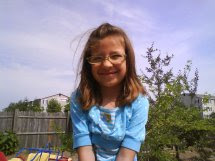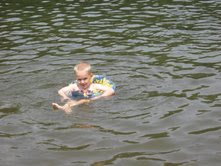 This is the highest physical bridge in the world.
This is the highest physical bridge in the world.
Guess what is the highest emotional bridge in the world?
A good preschool program!
A great preschool program, and that includes kindergarten, is a program that children WANT to go to. It’s a program that at its very nature is fun. Fun in child means learning and finding out about things and getting to do – all by myself.
A good preschool program should be safe, and children should feel they are cared for and secure – that mommy and daddy left me in a good place where I can grow and laugh and enjoy my day every day.
So how do you know that a program is going to be fun and safe? Look around.
Every building is different. When you enter, will the child think he’s at the doctors? Will he think “no no!” Look at his face. What is he thinking? When a parent brings their child to school for the very first time, a child should be ready to embrace whatever he sees, and if there is nothing to embrace, perhaps the ideas being put forth from the school are not centered on the child but on the adult, or the board of directors, or the affiliate who is absent, or someone in an office locked safely away.
A good preschool is inviting. It draws a child gently from his parent’s hand and leads him – all by himself – into a world of play. It is bright, there are windows and many lights, the room is filled with growing things, it is filled with toys that are organized and ready for play.
A good preschool program involves many things including some primary care. Washing hands, learning to use a new bathroom, sitting at the table, joining in group activities and listening are all part of primary care. Parents looking for a program should ask about these things. Sending a very young child to the bathroom to wash his hands will not produce clean hands. It will produce an absent child. Children need to be shown – away from home – how to do all these things – away from home.
Once primary care rules are set and followed, the education can begin. Look around again. Are very young children in desks? Are desks really appropriate for young children? Desks say “isolation.” Should very young children be isolated from one another or do children learn better and more when they work together? With no pre-knowledge to draw from, children will always learn more working together. Ask yourself: if you went to a foreign country and were asked to build a well, and you were told to do it “all by yourself” would you have more success by yourself or with a group of people with many ideas and many points of view?
An appropriate work station for very young children is a long table where they can sit or stand according to the work at hand.
So how much of the day should be spent at this “table?” Not a lot. The very idea that someone would encourage a three, four or five year old to sit for long periods of time is an idea that should never have been thought in the first place. Threes, fours and fives are quick learners and twenty minutes at a time is enough “table time.” Then they need a break to do other things.
But those other things do not necessarily mean random play. The directed parts of a good preschool program are carefully orchestrated to play into one another, to compliment one another and encourage more from the child. Science, fine arts, social studies, geography, foreign language, math, reading, word power, are just some of the activities of a good program that are mixed and matched through the day with sit and stand and move and stay and talk and listen times that make sense.
A good all day program will begin with a community meeting or a circle time. In that time certain things will be accomplished: The children might review, might tell each other what they learned the day before. They might reveal what happened at their house the night before. They might acknowledge a birthday or that they got new shoes the day before. Together they might pray if prayer is something that’s important to the school. They will salute the flag, sing the Star Spangled Banner or an American song together because this is something to be learned early. The activities of the day might be announced by the teacher, and in a few minutes, children will move on to other things.
During the day of a good program, there will be a story, poetry, nursery rhymes and fairy tales told because these are a part of a good education. There should be plenty of art and plenty of free play that allows children to use the art supplies. Art is not a self taught gig. It’s a teach me show me then…I can do it all by myself. And art should be admired and complimented by a teacher. It should be respected enough to go home with the child.
Lunch should be a terrific part of the day. Children should look forward to eating something really outstanding. This is probably the biggest possibility for quality food in the child’s life. It’s not a morning pop tart in the car. It’s not a quick burger in the car on the way home. It’s a time when children can sit with friends and talk and joke and have a great time. It’s “out to lunch” with friends – a truly joyous occasion for fun.
At the end of a day, a child should be delighted to see mom and dad because he has learned so much he can’t wait to tell them. He is learning to speak about his day, about his thoughts, about his ideas because there is always something new going on at his school.







